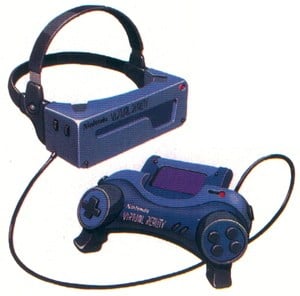
Everybody has an awkward secret that they'd rather not share with the world. Be it an old school photo that showcases your crimes against fashion or an acutely embarrassing vinyl LP in your record collection that you simply can't bear to part with, we keep these things hidden from the world in the hope that if we ignore them they might cease to exist.
In the case of Japanese video game giant Nintendo, the Virtual Boy is unquestionably its 'dirty little secret'. More than a decade after this unusual console sank almost without trace after enduring a period of consumer indifference the likes of which its parent company had never previously experienced it remains a by-word for dubious video game hardware.
The genesis of the Virtual Boy came about when Nintendo was approached by US firm Reflection Technologies in the early '90s. Reflection was attempting to find a buyer for its independently-produced display technology and Game Boy creator Gunpei Yokoi was quick to spot potential in the system; he hit upon the notion of using two displays to create a three dimensional image. In 1992 Nintendo acquired exclusive worldwide video game licensing rights to Reflection Technologies' innovative system and Yokoi's Research & Development 1 team set about creating the console that would be the first fruit of this union.
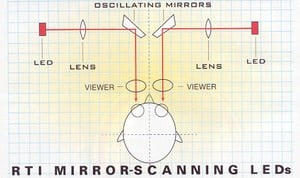
As development progressed Yokoi and his staff toyed with several different designs. Despite the machine's close ties with the concept of 'virtual reality', the idea of having a head-mounted system was ruled out almost immediately. Yokoi claimed that as soon as it was decided that the console would not support motion tracking to detect head movements the decision was made to mount the system on a stand, rather than affixing it to the player's head.
While R&D1 furiously tinkered away within Nintendo's Kyoto HQ, news of this potentially ground-breaking new console – codenamed 'VR-32' – began to slowly trickle through to the gaming press. The biggest news was that it would pack a 32-bit CPU, like the upcoming Sony PlayStation and Sega Saturn. The next revelation was the ground-breaking 3D display, which promised a new standard of immersion.
However, the timing of this news – not to mention the entire project – was somewhat perplexing as Nintendo was also making a tremendous amount of noise about its 64-bit 'Project Reality' console (which would go on to become the Nintendo 64). Bearing this in mind, it's unsurprising that most gamers therefore interpreted the VR-32 as the spiritual successor to the aging Game Boy and the fact that Yokoi was involved only served to confirm this assumption. Regardless of this confusion, Nintendo fans were hungry for new hardware and therefore their interest was sufficiently piqued.
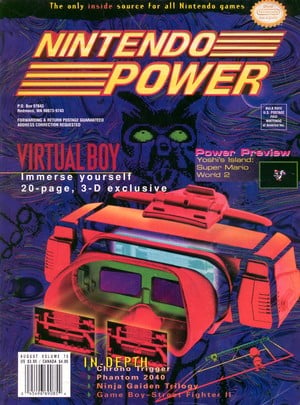
However, within the walls of Nintendo's HQ, Yokoi was unsettled. Nintendo was keen to get the VR-32 onto the market before committing all of its energies to the Nintendo 64, but it has been alleged that Yokoi felt it needed further fine-tuning. His reservations were disregarded; Nintendo was losing face because of Sony and Sega's impending entry into the 32-bit race and it was clear that the company needed something to tide fans over until the N64 hardware could be completed.
Having expended millions on VR-32 development already, Nintendo was understandably eager to get the hardware out onto shop shelves in order to recoup its costs. Yokoi and his team prepped for launch but unfortunately the VR-32 (by this point officially rechristened Virtual Boy) would experience one of the most disastrous unveilings in the entire history of the video game industry.
The first inkling that Nintendo might have a turkey on its hands was the overwhelmingly negative reaction to the Virtual Boy's debut at the Shoshinkai show in November 1994. With the gaming press expecting a 32-bit powerhouse to rival Sony and Sega's recently-announced offerings, the red and black 2D visuals generated by Yokoi's TomyTronic 3D-like device were something of a shock and many journalists at the time were surprisingly frank with their opinion of the device.
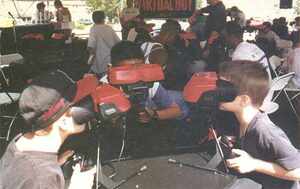
Some openly questioned Nintendo's sanity, while others predicted there and then that it would fail miserably. Few had anything positive to say. Despite this devastatingly unenthusiastic reaction, NOJ supremo Hiroshi Yamauchi remained bullish about the Virtual Boy's prospects and confidently predicted it would shift 3 million consoles in Japan, as well as 14 million cartridges between its launch and March 1996.
Prior to launch Nintendo was extremely cagey about revealing the secrets of its new machine – possibly out of fear that rival firms would copy the concept. Inside the console was a fairly complex array of cutting-edge technology that was able to create the impression of 3D depth.
“For each eye there is a bank of vertically stacked red LEDs," explains programmer Steve Woita, who worked on Ocean Software's Waterworld Virtual Boy title. “These are arranged with 224 LEDs per bank and spray their information onto a mirror that is spinning at 50 times a second and delivering the game screen image to the retina. This is done for both eyes and means there has to be a grand total of 448 LEDs continually spraying information into your eyes."
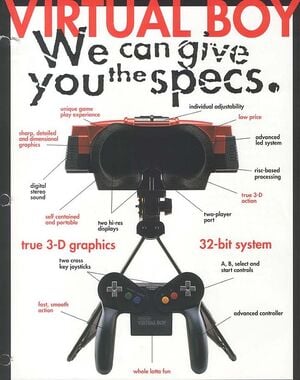
Jason Plumb, who worked alongside Woita on Waterworld, expands on this. “This process presents a separate image to each eye," he says. “If these images match the disparity that you are used to seeing in real life then you perceive a sensation of depth related to the disparity between the images. Objects in the distance appear in the same position in both images, but the closer an object is in the scene, the more the horizontal position changes between the images. You can see this effect by holding a finger in front of your face, and comparing the image you see with each eye by closing the other. Your right eye sees your finger on the left side of what you can see, and the left eye sees it on the right side." Industry experts voiced their reservations about the predominantly 'red' visuals, but as Plumb explains, this was a cost-cutting measure more than anything else. “The main reason was that colors other than red were cost prohibitive," he comments. “Red LEDs were also more power efficient and easier to see than others."
The much talked about 32-bit CPU might have placed the console in a different league to the aging Super Nintendo and Sega Mega Drive, but because of the additional effort of marshalling two displays instead of the traditional one, the power of the NEC810 CPU processor wasn't instantly apparent. “From a programming point of view it was difficult; the machine essentially had to keep twice as many screen buffers ready for display in the next frame than it would in a normal console game," says Woita.
It also didn't help that the console lacked many features that were just starting to be incorporated into modern home consoles at the time. “The strange thing about the Virtual Boy was that it was a 3D device without dedicated 3D hardware," comments Plumb. “3D hardware acceleration was just starting to blossom at the time and required too much power to incorporate into what was essentially a portable device. So, the Virtual Boy had a standard NEC810 processor with a couple of other chips to handle rendering sprites and sound."
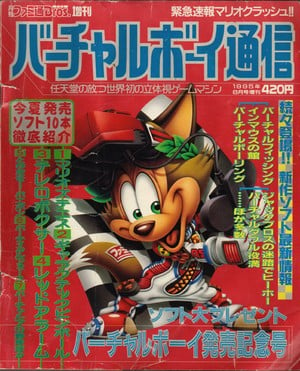
While it might have been lacking from a technological viewpoint, elsewhere it was genuinely ground-breaking; take the unique controller - which arguably had a massive influence on the design of the N64 pad - for example. “It has extensions that you grip with the palm of each hand" says Plumb. “Most controllers of the day were designed to sit in your fingers." The controller also features two d-pads – something that would later be mimicked by the twin analogue sticks of the PlayStation Dual Shock. “I really liked the Virtual Boy controller," admits Woita. “I thought it was ergonomically designed to meet the needs of all kinds of potential game designs."
When the Japanese launch arrived on July 21st 1995 it heralded some unusual scenes. The anxious queues of hardcore fans that greeted the launch of the Super Famicom in 1990 were suspiciously absent and day-one reports suggested that stores failed to shift all of their Virtual Boy consoles – something that is almost unheard of with a Nintendo hardware release, even to this day. This was despite the fact that the console had seen its initial RRP slashed from ¥19,800 to ¥15,000 – an attempt by Nintendo to make it 'more appealing to a wider range of gamers'.
The reasons for this dismal debut were manifold, but perhaps the most important was the lack of truly killer software; while the opening salvo of titles was fairly enjoyable, there was no Super Mario World or F-Zero to convince people the machine was worth owning for. Third party support – usually so muscular with Nintendo hardware – was suspiciously light on the ground, and it transpired that this was largely down to Yamauchi's orders. In an somewhat misguided attempt to ensure that the Virtual Boy only got the very best standard of software, he made sure that only a select few companies were shown the technology and permitted to sign up for development. It was a bizarre method of 'quality control' that ultimately backfired, as the system struggled to gain any kind of third party support after it's catastrophic opening week sales – in fact, only 22 games were ever produced in its entire lifespan.
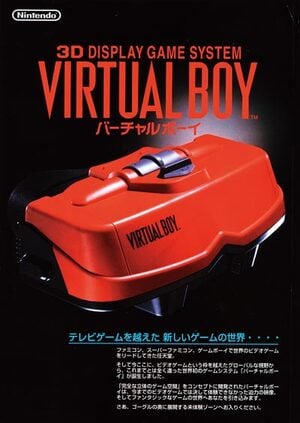
The system's position within Nintendo's catalogue also caused bewilderment. People had been expecting the next Game Boy and the fact that 'out of the box' the Virtual Boy was only able to run when powered by 6 AA batteries seemed to confirm its portable nature; however, after seeing the finished hardware in the flesh it was painfully obvious to even the most cerebrally-challenged individual that this clearly wasn't a mobile system.
Woita thinks that in this regard the company was probably guilty of not being transparent enough with the aim of the project. “What Nintendo really meant by portable is 'transportable' in that you could carry the device from one stationary place to another," he says. “They never really meant 'portable' as in the Game Boy or DS type of portability. Imagine if you were to try and play the game while walking around, you'd fall down the stairs or bump into a wall!"
For Nintendo, the bad news didn't end with the disappointing opening week sales. Those consumers that took the plunge and made a purchase complained of headaches after prolonged use; this was possibly a side-effect of the harsh red visuals but it's just as likely that these users weren't adjusting the focus settings correctly.
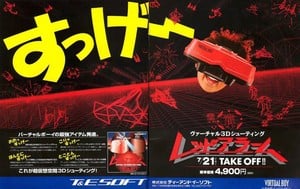
“Because the distance between the left and right eye is different for everybody, the Virtual Boy had to have a way for the user to adjust the independent spinning mirrors," explains Woita. “The knob at the top of the device would let you adjust what you see in the same way that you adjust a pair of binoculars to visually feel comfortable for you eyes." Nausea was another apparent side-effect, but again this was probably down to users failing to calibrate the hardware properly – while the images generated by the Virtual Boy had the potential to cause sickness, programmers made efforts to ensure that this unwelcome feature was not included in the finished software they produced.
“You could display whatever you wanted in each display," explains Plumb. “The hardware did not force any correspondence at all. I'm sure that if you displayed images that were too outside what the brain is used to seeing then it would be somewhat stressful to experience." To prove this point, Woita recalls a moment during the production of Waterworld when proper procedure wasn't followed: “When we were tuning the horizontal distances between the left and right eye our manager took a copy of the game to the test lab without us knowing and the testers got a little bit queasy! Of course, this all got fixed the next day."
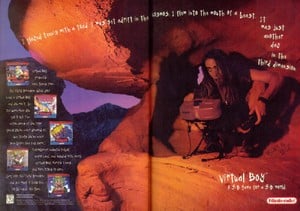
These scare stories – combined with Nintendo's own admission that using the system could damage the eyesight of children under the age of 7 – did much to harm the public perception of the console, but hindsight has proven that the vast majority of owners could play their machines without experiencing any of these highly-publicised problems. Still, there was no getting away from the fact that the Virtual Boy was not a particularly comfortable console on which to game; it required the user to adopt a hunched seated position which led to further complains of neck-strain.
Compared to the glorious liberation offered by the Game Boy, these issues made the Virtual Boy look distinctly un-user friendly. It didn't help that Nintendo made some significant blunders with other vital aspects of the console, too. Although the system showcased an 'EXT Port' interface which would allow two machines to be linked together (a feature which had arguably contributed to the Game Boy's incredible mass-market success a few years previously), a link cable was never produced. “A two-player cable was in the works," reveals Plumb. “I remember working with Waterworld's 'head-to-head' mode, but in the end this feature was dropped from our plans for the game pretty early in production, as the cable didn't appear."
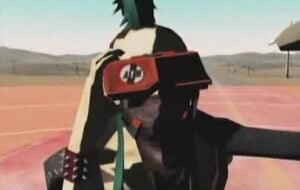
Despite the Virtual Boy's frosty reception in its homeland, Nintendo continued to plan the US release; however, this time it was eager to enlist support from as many third party developers as possible. “Nintendo was great to work with all along the way," admits Woita. “They had a two-day development conference up in Seattle before the US launch and I learned about some cool new features that had never been found in a gaming device before, or since. I've worked on so many different types of consoles and development environments and I must say the Virtual Boy was a very interesting console to develop for. You'd compile your code on the Virtual Boy development box that was hooked to your PC and then you'd slide your head over to the Virtual Boy itself to look in and see what your change did, then you'd move your head back over to your PC screen, recompile and repeat the process."
The Virtual Boy hit American store shelves in August 1995 and it was welcomed by the same consumer apathy that greeted its launch in Japan. Nintendo of America tried to remain confident and boasted of a complete sell-out; however, what the company failed to disclose was that many of the larger electronics chains had taken as little as two units per store.
As if to confirm the lacklustre retail performance of the console, the price was swiftly slashed from $180 to $159 before dropping to an official RRP of $99 in May 1996. When this failed to shift stock, stores took it upon themselves to drastically discount the system and it has been reported that Virtual Boys were changing hands for as little as $20 in some parts of the US. In total just 800,000 units had found their way into the homes of gamers worldwide – way short of Yamauchi's modestly predicted 3 million, and as you might expect such dire performance in the Japan and US effectively destroyed any chance of a European release. It was a disaster of truly epic proportions and the impact it had on Nintendo's status in the video game industry was considerable.
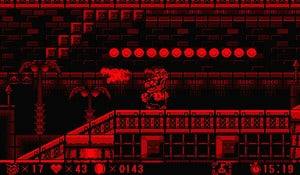
Of course, someone had to take the blame and that person was Gunpei Yokoi. The man who had generated untold wealth for Nintendo thanks to an astonishing string of high-profile successes (including the Game & Watch series and the Game Boy) found that his reputation was in tatters and rumours suggest that he was treated like an outcast within the walls of Nintendo's Japanese HQ.
He took the failure of the console incredibly personally and left the company under a cloud in August 1996 to form his own studio (an seismic act that caused nervous traders to offload Nintendo shares so vigorously that the Tokyo Stock Exchange had to cease trading), which would go on to collaborate with Bandai on the Game Boy rival WonderSwan. Sadly he never saw the machine make it to the market – he was tragically killed in a roadside accident in 1997. He was 56 years old.
Although coming up with an explanation for the failure of the Virtual Boy seems simple enough, many of the reasons behind its poor performance are more subtle than you might otherwise expect. “I think the anti-social nature of the machine was the main issue," comments Plumb. “In my opinion, even with a full-colour display and fantastically powerful 3D hardware, users would be reluctant to accept it as a day-to-day system because of that."
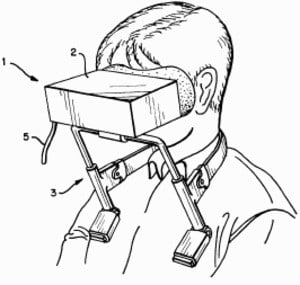
Woita has his own take on the fiasco: “I'd go into a toy store and see the Virtual Boy display set up and 9 out of 10 times it would be broken, so point of purchase wasn't working for it and the only way you can really sell this unit is to try it first hand; TV commercials couldn't do the machine justice because the TV couldn't show the Virtual Boy's cool 3D capability." The luckless console lasted less than a year before Nintendo unceremoniously switched off the life support, and bearing in mind that most video game hardware doesn't really hit its stride until at least a couple of years into its life span, is it possible that the Virtual Boy could have improved, had it been given opportunity to shine? “Most definitely," insists Woita. “The whole Virtual Boy development community at the time was cutting their teeth on their first round of games. It takes a few years to start figuring out tricks that allow you to squeeze the most out of a given platform."
Despite the negative reputation that the machine has, it's surprising to find that those who have had the chance to work with it have positive things to say. “The Virtual Boy was a fantastic piece of technology," says Woita. “We just started to scratch the surface of what could be done and I was really excited about creating games in what I would call closer to real 3D then we 'see' now."
Over the years Nintendo's attitude towards its unwanted child has cooled slightly; the Virtual Boy has made some notable appearances in the Wario Ware series (Virtual Boy title Mario Clash is one of the mini-games in the Game Boy Advance version, for example). The machine itself is now a highly valued collector's item amongst dedicated Nintendo aficionados and merely owning one grants you entry to the upper echelon of fandom. It may have been a non-starter but there is one thing you simply cannot deny when talking about the Virtual Boy: it was truly unique experience, the likes of which we may never see again.
This feature originally appeared in its entirety in Imagine Publishing's Retro Gamer magazine, and is reproduced here with kind permission.





Comments 57
How I used to wish I owned one of these back in the day.......
Edit:Yes, its true, cheapo has always been cheap
Hmmm...
Let's just hope the 3DS get's much better treatment than the Virtual Boy did...
My cousin still has one of these bad boys around. I used it a few times and man-oh-man does it SUCK
The one Nintendo console I don't own...I just wish they had done more with it, so I have motivation to own it.
Most of the flaws mentioned here don't seem to apply to the 3DS, so here's hoping.
Ah good ol' Virtual Boy.
Although, there are a few games that I would like to play on Virtual Boy, Red Alarm, Teleroboxer, Mario Clash, and Wario Land.
@irken.... yes it does, my cousin bought one on release back then and my god at the headaches and neck strains. It sucked royally and the obnoxious red color was horrid. Worst thing ever devised by Nintendo.
Im actually suprised they are trying the 3D thing again honestly. If they failed two times at it it would lood REALLY bad, AND both of them were Portables/SemiPortables. I doubt it will happen, but everyone of my big Nintendo fanatic friends of mine (were all pushing 30 yrs old lol) Ive talked to have all said they arent interested at all in it. We shall see.... Im trying to be more optimistic than skeptical about 3DS. I keep thinking if you take the game Sean Aaron showed, and added a character into it, the camera will be Isometric, wich is never fully precise in controlling and how will it work, will all games need head tracking? So many crazy questions!
I remember that here in mexico, the company that distributed Nintendo had an offer where if you bought a SNES you could get a VB free. Even the SNES had more deal than the VB!
The only experience i've had with VB are the Mario games (via the original Warioware). They're AWESOME.
My freind has one of these
Now I want to go to his house and buy it I'll give him $10 he doesn't know how much its worth
Still have my Virtual Boy.
I got a few accessories for it too like the case that holds the system and several games and the legs go in a back compartment.
Not only could I play with batteries but I also got a power adapter so you could plug it in the wall.
When I was younger I could play it and now it does give me a headache.
I have Mario Clash, Mario Tennis, Nester's Funky Bowling, Red Alarm, Teleroboxer, Golf, Vertical Force, and Wario Land.
Interesting read though as I never knew that it could have been made in Color.
interesting that this failed but led the way to so many things - 3D gaming for consoles and handhelds obviously, but the article mentions the controller and even dual d-pads..
Excellent read. I've always wondered about the VB, and I'd love to get to play one someday. Anyway, I hope these predictions about the 3DS being the VB2 turn out to be wrong.
I have this console and i have all the games
The best console ever .
is it fun?
I've got one and I personally love the thing, I don't get headaches and Mario Clash is awesome
I rented this back in the day to check out its potential. I thought Red Alert was very cool at the time. A solid experience. The 3D effect is pretty much perfect but it took me a long time to find a way to play it comfortably.
On top of this, it has the same problem I have with the dinky portables, nowadays. I can't share my experience. Playing the NES was sometimes a loner experience, but ultimately you wanted to share it with friends. Now, I want to share with my wife and kids and friends. Works great with NSMBW, and other Wii games. DS just doesn't work even with someone right next to you. The Virtual Boy was always completely hopeless in the regard.
I never did play the Wario game though. /
I still have that Virtual Boy stashed away and only two games with it. Mario Clash & Tennis. Maybe they should use those games from the Virtual Boy as remakes for the Nintendo 3DS.
Man I hope that the VB Wario Land makes a return on the 3DS. I remember playing that in SEARS when I was a kid, and before it made me dizzy, I was having a blast. I'd love to see a redux, with more than one shade of color.
@slapshot82 Head tracking won't be needed for the 3DS, since with a portable system, you have just one player always looking straight ahead into the screen.
I have a Virtual Boy which I baught off eBay a year or so back. Too bad the screen has graphical line Problems. But I'm happy to say I have Jack Bros 'complete' It's a decent game, but totaly rare.
But it's hard to enjoy any game or see it til' the end, at least for me anyways due to getting eye strain
This never existed. they all lie! LIE I TELL YA!!
I was too young to try the thing out at release. A real shame, 'cause I'd LOVE to give it a go, especially for Wario Land. I'm with those voting for 3DS versions of some of those games! Figure the odds, though...
This thing is one of the many reasons I have horrible eyes
@Donatello - Graphic line issues are a common problem with VB hardware. It's to do with the cheap connections that Nintendo used. There is a way of fixing it but it requires re-soldering all of the wire connections and isn't something you'll take lightly.
I had a virtual boy, I hated it hurt my eyes, I only had Red Alarm though, and it was boring. Anyway I hope the 3DS will be better.
LoL @ that shoulder stand. Imagine seeing somebody sitting on a train/subway using that thing! haha. Also, the first thing that popped into my head when I saw that caveman ad was, "It's so easy, a Caveman can do it." Curse you, Geico and you're stupid slogans.
@Bulbasaurus: That depends on the game, if the player's eye-line or head orientation is important to the game, then I expect head-tracking and motion will be used in concert; hopefully the 3DS will have better quality image sensors than the DSi to cope with a wider range of lighting conditions.
I'm surprised Steve Woita had so many nice things to say about it, considering Waterworld was supposedly the worst game on the system. :S
I remember playing the display model at the local Sears store. Wario World was actually pretty fun, even if the system wasn't worth it.
I bought one on October 1995, had to say it was imprssive, I still have it, next to my other Nintendo Systems, i will remain as one of the few who really apreciate the system...
Waterworld was really bad, buy on the other side, Red Alarm or Wario were really great games...
Really hope Wario comes to the 3DS
saw it at a old store that sells old stuff like this. saw it for $3.50 so i bought it. i returned it and used the $3.50 to get headache medicine.
I actually got it soon after it came out, I was one of those people who picked it up after it clearanced out. I would have been maybe 12 or 13 and had a bit of birthday money...got the Virtual Boy at my local Meijer store for $30 and paid no more than $7 for all the games I got (also new).
I still pull it out every once in a while just for a few games of Nester's Funky Bowling.
Red Alarm...well, Red is right! All the titles should have had red in the title.
I bought a Virtual Boy and a few games at clearance prices back in 1997, I think I paid $40 for everything. Hada blast with it, but moved on. Between a new girlfriend, a new Playstation, and my roomates N64 the VB was quickly forgotten... and several years later I literally THREW IT ALL IN THE TRASH. I had younger relatives whom I thought of giving it to, but did not want to ruin anyone's eyesight, it said so right on the box! One of my biggest videogame related regrets, I probably could have sold it for a nice profit by now.
Oh Nintendo.....
I heard on Youtube that the virtual boy caused players eye-strain. When the 3D's comes out I'll wait for a reveiw. If it's good then I'll get it. if it's bad then I'm sticking with my DSi.
One of the used stores in my area has had four of these for a couple of years for like 10-15 bucks each. It's been in the back of my mind for a while that I should head over there and pick one up, and this article has just made that impulse stronger.
still have mine... wario land is a masterpiece, i think ill try to get a few games that i naver had...
They were going to make a shoulder-mounted stand? Darn it.
I was hoping that they would put some of the VB games on WiiWare, but it would also be cool if they put them on 3DSWare (or whatever they will call it.)
Thats a fail, I don't think I'm looking forword to 3DS, unless they develop 3D tech, that doesn't hurt my eyes. I already think 3DTV's are ridiculous and a pwnd of overkill.
I remember playing this at my local Blockbuster and getting a headache from the black and red colours! It was pretty cool for it's time, just not well executed because to the two colours that Nintendo choice...in my opinion.
I have one ; ) and love it!
If you are a collector or a retrogamer get it...
you can't deny the fact that the virtual boy and the vectrex
are the most unique consoles ever made.
plus it's relativly cheap if you want one.
This thing may have sucked, but Galactic Pinball was one of the best damn pinball games I ever played.
I loved Mario Clash, but I find it hard to believe that the Virtual Boy would've taken off if given a chance or more time.
Anyone selling?
I've always been bothered by how Nintendo blamed Gunpei Yokoi for this whole mess. Lousy way to show gratitude to someone who gave the company one of their best systems. If anyone should have been disgraced over the Virtual Boy, it's Yamauchi for thinking this system would be a success. Now we're all left to imagine what kind of impact Gunpei would have had on the DS and the 3DS. Shame, really.
Still have my Virtual Boy, which was bought for the full price of $180, sitting on my shelf. (I didn't pay for it though, my mom did) I believe I have 5 games for it. One of them is Wario Land VB, and it's awesome.
And yes, BlueFlameBat, Galactic Pinball is pretty great!
anyone sell one to me, im kind of interested
Funny! I just played a 3DS display unit that was bolted down and it totally reminded me of the VB because I had to hunch over to see the 3D effects correctly. It gave me the same neck craps and all. lol.
@TheDarkness: neck craps? that sounds like a personal problem
Never played this system. This is one time Nintendo tried to come up with something new. A virtual reality 3D videogame portable? Console? "device"! Nintendo failed with this system.
They made the DS series work and The Nintendo Wii worked out. These wacky ideas worked out for Nintendo. The Virtual Boy and it's 22 games just stand out as a Epic fail for Nintendo.
I have one listed on ebay if anyone's interested.
Here:
http://www.ebay.com/itm/Nintendo-Virtual-Boy-Red-Black-Console-/251746477688?#description
Tap here to load 57 comments
Leave A Comment
Hold on there, you need to login to post a comment...